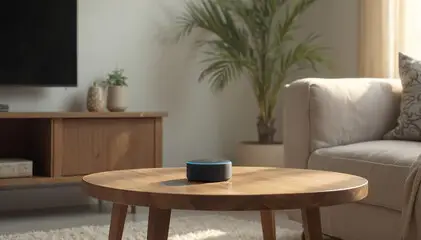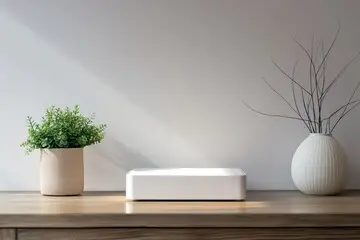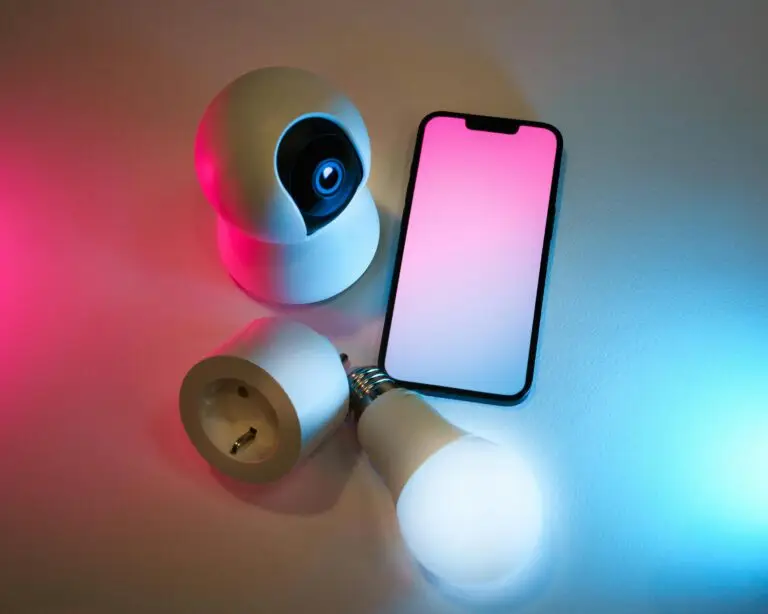Control & Automation
Smarter Lighting, Simplified Living
Understanding Lighting Control & Automation
Lighting control and automation are becoming essential across residential, commercial, and industrial spaces. From smart homes to large-scale commercial operations, lighting automation is helping reduce energy costs, enhance security, and improve convenience.
In modern homes, smart lighting systems allow users to adjust brightness, set schedules, and integrate with voice assistants for hands-free operation. In commercial buildings, automated lighting solutions help optimize energy efficiency by adjusting illumination based on occupancy and daylight levels. Whether it’s optimizing energy efficiency in commercial buildings, integrating smart home lighting, or implementing industrial automation, intelligent lighting solutions bring convenience, efficiency, and enhanced customization to modern environments.
From smart switches and dimmers to voice-activated controls and programmable lighting schedules, automation technology allows users to tailor lighting to their needs while reducing energy consumption and improving security.
Why Choose Lighting Control & Automation?
Market Trends & Industry Insights
According to industry data, businesses implementing commercial lighting control systems can reduce energy consumption by up to 35%, while smart home lighting automation improves efficiency and enhances user experience. With rising adoption of IoT-connected lighting solutions, automation is now a critical factor in building management systems.
The Key Benefits of Smart Lighting Systems
Lighting control systems provide numerous advantages for both residential and commercial applications, including:
- Convenience – Control lighting through mobile apps, voice commands, or automated schedules.
- Energy Savings – Automated dimming, motion sensors, and smart controls reduce power consumption.
- Customization – Adjust lighting based on activities, time of day, or personal preferences.
- Enhanced Security – Programmed schedules and motion-activated lights deter intruders.
- Seamless Integration – Smart lighting connects with home automation systems like Alexa, Google Home, and industrial control platforms.
Understanding how lighting automation works is key to maximizing its benefits. By leveraging smart technology, users can create more efficient, adaptive, and user-friendly lighting environments.
How Does Lighting Automation Work?
NORA and Lutron lighting control systems integrate seamlessly with various smart home and commercial automation platforms, providing advanced dimming, occupancy sensing, and energy-saving features. These solutions offer flexibility and customization, making them ideal for both residential and industrial applications.
Smart Lighting Technologies Explained
A modern lighting control system consists of various technologies designed to optimize performance, energy efficiency, and ease of use. These include:
- Smart Switches & Dimmers – Allow manual and remote control of lighting intensity.
- Voice-Activated Systems – Work with AI assistants like Alexa, Google Home, and Siri.
- Mobile App Controls – Enable scheduling, remote adjustments, and customization.
- Timers & Sensors – Automate lighting based on occupancy, daylight levels, and schedules.
- Industrial Lighting Automation – Centralized control systems for warehouses, factories, and commercial buildings.
Choosing the Right Lighting Control System
Comparing NORA and Lutron to Other Systems
When selecting a lighting automation system, it’s important to consider compatibility, scalability, and energy efficiency. NORA and Lutron systems stand out due to their seamless integration with both residential and commercial environments.
- NORA Lighting Solutions offer a wide range of smart dimmers, occupancy sensors, and energy-efficient LED controls, making them ideal for both small and large-scale automation projects.
- Lutron Smart Lighting is known for its high-performance wireless control systems, advanced scene settings, and precision dimming, allowing users to customize lighting to their exact preferences.
- Compared to other systems like DMX & DALI, which are tailored for industrial and architectural applications, NORA and Lutron provide more user-friendly interfaces and broader smart home compatibility.
- Wi-Fi & Bluetooth-based smart lighting may work well for smaller residential setups, but NORA and Lutron’s scalable solutions are better suited for expanding automation networks in homes and businesses alike.
By understanding the strengths of each system, users can make an informed decision when upgrading or installing lighting automation solutions.
What to Consider When Selecting Automation Solutions
Selecting the right smart lighting system depends on your specific needs and setup. Consider the following:
- Compatibility – Ensure the system works with existing smart home or building automation networks.
- Scalability – Look for solutions that can expand as your automation needs grow.
- Energy Efficiency – Opt for LED-compatible smart controls that minimize electricity use.
- Control Preferences – Choose between voice control, mobile apps, or traditional wall switches.
- Installation Requirements – Some systems require professional installation, while others are plug-and-play.
For expert guidance on setting up lighting automation tailored to your needs, explore our blog section for in-depth insights.
Featured Products: Top Picks for Lighting Control & Automation
Explore cutting-edge automation products that enhance efficiency and convenience. Unlike traditional lighting options, these smart solutions offer remote control, automation, and integration with broader home or commercial management systems, allowing for greater customization and energy savings:
- Smart Switches & Dimmers – Effortlessly control brightness with touch or voice.
- Smart Hubs – Connect and manage all smart lighting devices in one place.
- Wi-Fi-Enabled Smart Bulbs – Adjust colors, brightness, and schedules remotely.
- NORA Smart Sensors & Lutron Caséta Wireless Motion-Sensor Lights – Ideal for energy savings, offering advanced automation features and seamless integration with smart home and commercial systems.
Investing in high-quality lighting automation products ensures optimal performance and future-proof solutions for any space.
Smart Home & Commercial Integration
Key Industries Using Lighting Automation
The demand for lighting control is expanding across multiple sectors:
- Retail & Hospitality – Enhancing ambiance and energy efficiency with automated dimming and scheduling.
- Healthcare Facilities – Using circadian rhythm-based lighting to improve patient well-being.
- Industrial & Warehouse Automation – Implementing motion-sensor and daylight harvesting systems to optimize productivity.
By integrating smart lighting with automation platforms, businesses can enhance energy savings while improving overall operational efficiency. NORA and Lutron solutions are widely used in industries such as retail, hospitality, and healthcare. In retail environments, automated lighting enhances product displays and reduces energy waste. Hotels and restaurants use smart lighting to create dynamic atmospheres while maximizing efficiency. In healthcare facilities, circadian rhythm-based lighting from Lutron and NORA improves patient comfort and staff productivity by adjusting brightness levels throughout the day.
Frequently Asked Questions About Lighting Control & Automation
-
What is the best lighting automation system for homes?
- Wi-Fi-enabled smart switches, dimmers, and voice-controlled lighting provide the most flexibility.
-
How can automation improve energy efficiency?
- Automated schedules, occupancy sensors, and dimmable LED controls help reduce unnecessary energy use.
-
Why are NORA and Lutron ideal choices for lighting automation?
- NORA and Lutron provide industry-leading compatibility, scalability, and energy efficiency. Their solutions integrate seamlessly with smart home systems, commercial applications, and industrial environments, making them the preferred choice for reliable and customizable lighting automation.
Conclusion
Lighting control and automation revolutionize the way we illuminate our spaces, offering customization, energy efficiency, and seamless smart integration. Whether upgrading a home, office, or industrial setting, smart lighting solutions provide enhanced functionality and long-term cost savings.
For expert insights and recommendations, explore our blog section for the latest trends, products, and best practices in lighting automation.


